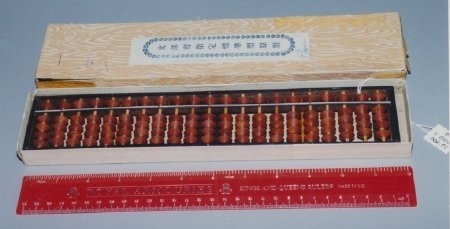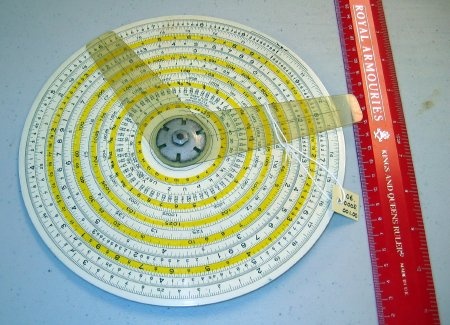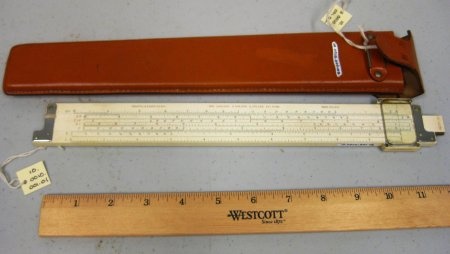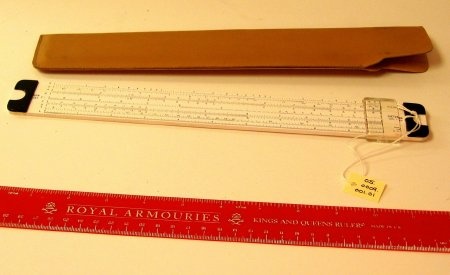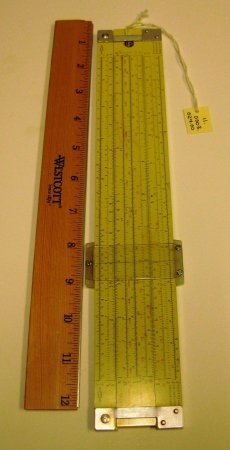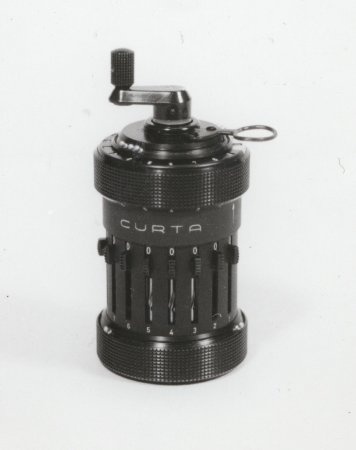...
Abacus
Chinese Abacus
| Div | |||||||||||||||
|---|---|---|---|---|---|---|---|---|---|---|---|---|---|---|---|
| |||||||||||||||
|
...
Keuffel & Esser Desk Slide Rule, No. N-4096, c. 1930
| Div | |||||||||||||||
|---|---|---|---|---|---|---|---|---|---|---|---|---|---|---|---|
| |||||||||||||||
|
J.R. Dempster RotaRule Pocket Slide Rule, No. AA., after 1933
| Div | |||||||||||||||
|---|---|---|---|---|---|---|---|---|---|---|---|---|---|---|---|
| |||||||||||||||
|
Keuffel & Esser Polyphase Duplex Decitrig Slide Rule, Model 4071-3, c.1939
| Div | |||||||||||||||
|---|---|---|---|---|---|---|---|---|---|---|---|---|---|---|---|
| |||||||||||||||
|
Keuffel & Esser Log Log Duplex Decitrig Slide Rule 4081-3, c. 1955
| Div | |||||||||||||||
|---|---|---|---|---|---|---|---|---|---|---|---|---|---|---|---|
| |||||||||||||||
|
Eugene Dietzgen Co. “National" Maniphase Slide Rule, No. 1767, c. 1958
| Div | |||||||||||||||
|---|---|---|---|---|---|---|---|---|---|---|---|---|---|---|---|
| |||||||||||||||
|
Pickett & Eckel Inc. Power Log Exponential Slide Rule, Model N 3-ES, c.1960
| Div | |||||||||||||||
|---|---|---|---|---|---|---|---|---|---|---|---|---|---|---|---|
| |||||||||||||||
|
...
Otis King’s Pocket Calculator, Scale No. 423, c. 1922Keuffel & Esser Thacher’s (Cylindrical) Calculating Instrument, c. 1927
| Div | |||||||||||||||
|---|---|---|---|---|---|---|---|---|---|---|---|---|---|---|---|
| |||||||||||||||
|
Keuffel & Esser Thacher’s (Cylindrical) Calculating Instrument, c. 1927
| Div | |||||||||||||||
|---|---|---|---|---|---|---|---|---|---|---|---|---|---|---|---|
| |||||||||||||||
|
Curta Co Cylindrical (Mechanical) Calculating Machine Type 1, c. 1948
| Div | |||||||||||||||
|---|---|---|---|---|---|---|---|---|---|---|---|---|---|---|---|
| |||||||||||||||
|


